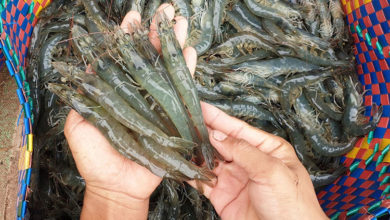Vietnam’s seafood industry is experiencing promising growth in the first half of 2024, with aims to exceed $10 billion in exportsfor 2024.
Expect $4.4 billion in the first half
Truong Dinh Hoe, Secretary General of the Vietnam Association of Seafood Exporters and Producers (VASEP), reported that the country’s seafood exports reached nearly $3.6 billion in the first five months of the year, marking a 6% increase compared to the same period in 2023. Despite a decline in the export value of squid, octopus, and various fish species (both marine and freshwater), which fell by 1% and 3% respectively, shrimp and pangasius (tra fish) exports have seen modest growth, rising by 7% and 4%. Crab and scampi exports demonstrated the most robust increase at 84%, followed by tuna at 22%, and bivalve mollusks at 13%.
In Vietnam’s top five seafood markets, the United States demonstrated the most positive growth with a 7% increase in the first four months of the year. Exports to South Korea saw a slight increase of 2%, while exports to China, Japan, and the EU remained nearly unchanged from the same period last year.
VASEP forecasts that seafood exports in the first half of 2024 will total $4.4 billion, a 6% increase from the same period in 2023. This includes $1.65 billion from shrimp, $910 million from pangasius, $457 million from tuna, $294 million from squid and octopus, $119 million from crab and scampi, and nearly $74 million from bivalve mollusks.
Aiming for $10.5 billion
The second half of the year will continue to present significant challenges for seafood exports. The shrimp industry faces issues such as countervailing duties and anti-dumping tariffs in the U.S. market. The production cost of raw shrimp in Vietnam remains considerably higher compared to major producers like India, Ecuador, and Thailand.
For instance, the farmgate price of whiteleg shrimp is currently about VND 15,000-20,000 ($0.64-0.85) per kg higher than the same size shrimp from Thailand, VND 20,000-30,000 ($0.85-1.28), higher than Indian shrimp, and VND 30,000-35,000 ($1.28-1.49), higher than Ecuadorian shrimp.
The pangasius industry is challenged by low export prices, slow consumption in the EU market, instability in the Chinese market, and ongoing anti-dumping concerns in the U.S. as it enters the 20th administrative review. Additionally, the IUU “yellow card” remains a burden for seafood businesses.
Other challenges include increased freight rates due to conflicts in the Red Sea, trade disputes disrupting seafood trade flows, and high inventory levels in importing markets.
However, Vietnam benefits from a growing demand for value-added products. At international seafood exhibitions in the U.S. and EU this year, value-added products garnered significant interest from buyers.
VASEP suggests that to meet the export goal of $10 billion this year, seafood companies must diversify their export markets to avoid over-reliance on any single market. They should also focus on expanding exports to new markets and enhancing the domestic market.
Furthermore, businesses should intensify product promotion, build a strong brand image and recognition for Vietnamese seafood, stay informed about market trends, and respond effectively and promptly to changes.
VFM






